Do you have a question about the Cadillac Escalade and is the answer not in the manual?
Details on vehicle keys, remote entry system, door locks, and security features.
Information on liftgate operation and power assist steps.
Explanation of the vehicle's theft-deterrent features and alarm system.
Information on mirror adjustment, power folding, dimming, and park tilt features.
Details on automatic dimming rearview mirror adjustment and operation.
Information on power window operation, express features, and window lockout.
Details on sunroof operation, vent, express features, and anti-pinch.
Guide to adjusting and using head restraints for occupant safety.
Instructions for power seat adjustment, lumbar, reclining, and heated/ventilated seat features.
Information on heated rear seats, second row seat folding, and third row seat operation.
How to use safety belts properly, including use during pregnancy and child restraints.
Details on airbag locations, inflation, restraint, and servicing.
Information on glove box, cupholders, armrest, and rear storage compartments.
Guidelines for using the roof rack system and loading cargo.
Explanation of steering wheel adjustment, controls, horn, wipers, and compass.
Guide to dashboard warning lights, gauges, and indicators for vehicle status.
Details on the Driver Information Center (DIC) and its various displays.
Explanation of system messages and alerts displayed on the DIC.
How to customize vehicle features and settings via the DIC.
Information on exterior lamp controls, automatic headlamps, and DRLs.
Details on dome lamps, reading lamps, and entry/exit lighting features.
Explanation of entry lighting, exit lighting, and battery power protection.
Overview of the navigation and audio system operation and features.
Information on AM-FM radio, satellite radio, and radio reception.
Details on CD/DVD players, MP3, and auxiliary devices.
Information on rear seat entertainment systems, including headrest and overhead displays.
Guide to using the navigation system, setting destinations, and route guidance.
How to use voice commands for navigation, audio, and phone systems.
Details on Bluetooth connectivity, call handling, and voice commands.
Guide to dual automatic climate control and rear climate control systems.
Instructions on using and positioning air outlets for optimal airflow.
Advice on distracted driving, defensive driving, drunk driving, and vehicle control.
Information on new vehicle break-in, starting the engine, and ignition positions.
Warnings and precautions regarding engine exhaust and carbon monoxide.
Explanation of transmission operation, manual mode, and tow/haul mode.
Details on all-wheel drive, brakes, and hill start assist.
Information on StabiliTrak, locking rear axle, and suspension systems.
How to use cruise control, set speed, resume, and cancel functions.
Explanation of ultrasonic parking assist, side blind zone alert, and rear vision camera.
Information on recommended fuel, specifications, E85, and filling the tank.
Information on dealer service, genuine GM parts, and California emission requirements.
Guide for performing owner maintenance, checking fluids, and inspecting components.
Information on headlamp aim and when dealer adjustment may be needed.
Guidance on replacing various vehicle bulbs, including HID and LED lighting.
Explanation of fuses, circuit breakers, and the engine compartment and instrument panel fuse blocks.
Information on tire maintenance, rotation, replacement, and types.
How to check tire pressure, TPMS operation, and malfunction indicators.
Instructions for using the tire sealant and compressor kit for temporary repair.
Step-by-step guide on how to safely jump start a vehicle with a dead battery.
Importance of required maintenance for vehicle performance and value.
Details of the maintenance program covering the first 4 years or 80,000 km.
Recommended maintenance intervals and owner checks for optimal vehicle condition.
Specific maintenance services for severe commercial use and underbody flushing.
Explains services and conditions that may indicate maintenance is required.
Lists recommended fluids, lubricants, and their part numbers for vehicle service.
A log to record service dates, odometer readings, and services performed.
Information on VIN, service parts identification label, and engine code.
Approximate capacities for refrigerant, coolant, engine oil, fuel, and transmission fluid.
Diagram illustrating the routing of engine drive belts.
Steps for resolving concerns with dealers and GM if satisfaction is not achieved.
How to report vehicle safety defects to the U.S. and Canadian governments and General Motors.
Information on vehicle computers, event data recorders, and data privacy policies.
Overview of OnStar services, navigation, and features.
Description of the comprehensive in-vehicle system and its status light indicators.
Details on Emergency, Security, Navigation, Connections, and Diagnostic services.
Information on transferring service and reactivation for subsequent owners.
Details on vehicle keys, remote entry system, door locks, and security features.
Information on liftgate operation and power assist steps.
Explanation of the vehicle's theft-deterrent features and alarm system.
Information on mirror adjustment, power folding, dimming, and park tilt features.
Details on automatic dimming rearview mirror adjustment and operation.
Information on power window operation, express features, and window lockout.
Details on sunroof operation, vent, express features, and anti-pinch.
Guide to adjusting and using head restraints for occupant safety.
Instructions for power seat adjustment, lumbar, reclining, and heated/ventilated seat features.
Information on heated rear seats, second row seat folding, and third row seat operation.
How to use safety belts properly, including use during pregnancy and child restraints.
Details on airbag locations, inflation, restraint, and servicing.
Information on glove box, cupholders, armrest, and rear storage compartments.
Guidelines for using the roof rack system and loading cargo.
Explanation of steering wheel adjustment, controls, horn, wipers, and compass.
Guide to dashboard warning lights, gauges, and indicators for vehicle status.
Details on the Driver Information Center (DIC) and its various displays.
Explanation of system messages and alerts displayed on the DIC.
How to customize vehicle features and settings via the DIC.
Information on exterior lamp controls, automatic headlamps, and DRLs.
Details on dome lamps, reading lamps, and entry/exit lighting features.
Explanation of entry lighting, exit lighting, and battery power protection.
Overview of the navigation and audio system operation and features.
Information on AM-FM radio, satellite radio, and radio reception.
Details on CD/DVD players, MP3, and auxiliary devices.
Information on rear seat entertainment systems, including headrest and overhead displays.
Guide to using the navigation system, setting destinations, and route guidance.
How to use voice commands for navigation, audio, and phone systems.
Details on Bluetooth connectivity, call handling, and voice commands.
Guide to dual automatic climate control and rear climate control systems.
Instructions on using and positioning air outlets for optimal airflow.
Advice on distracted driving, defensive driving, drunk driving, and vehicle control.
Information on new vehicle break-in, starting the engine, and ignition positions.
Warnings and precautions regarding engine exhaust and carbon monoxide.
Explanation of transmission operation, manual mode, and tow/haul mode.
Details on all-wheel drive, brakes, and hill start assist.
Information on StabiliTrak, locking rear axle, and suspension systems.
How to use cruise control, set speed, resume, and cancel functions.
Explanation of ultrasonic parking assist, side blind zone alert, and rear vision camera.
Information on recommended fuel, specifications, E85, and filling the tank.
Information on dealer service, genuine GM parts, and California emission requirements.
Guide for performing owner maintenance, checking fluids, and inspecting components.
Information on headlamp aim and when dealer adjustment may be needed.
Guidance on replacing various vehicle bulbs, including HID and LED lighting.
Explanation of fuses, circuit breakers, and the engine compartment and instrument panel fuse blocks.
Information on tire maintenance, rotation, replacement, and types.
How to check tire pressure, TPMS operation, and malfunction indicators.
Instructions for using the tire sealant and compressor kit for temporary repair.
Step-by-step guide on how to safely jump start a vehicle with a dead battery.
Importance of required maintenance for vehicle performance and value.
Details of the maintenance program covering the first 4 years or 80,000 km.
Recommended maintenance intervals and owner checks for optimal vehicle condition.
Specific maintenance services for severe commercial use and underbody flushing.
Explains services and conditions that may indicate maintenance is required.
Lists recommended fluids, lubricants, and their part numbers for vehicle service.
A log to record service dates, odometer readings, and services performed.
Information on VIN, service parts identification label, and engine code.
Approximate capacities for refrigerant, coolant, engine oil, fuel, and transmission fluid.
Diagram illustrating the routing of engine drive belts.
Steps for resolving concerns with dealers and GM if satisfaction is not achieved.
How to report vehicle safety defects to the U.S. and Canadian governments and General Motors.
Information on vehicle computers, event data recorders, and data privacy policies.
Overview of OnStar services, navigation, and features.
Description of the comprehensive in-vehicle system and its status light indicators.
Details on Emergency, Security, Navigation, Connections, and Diagnostic services.
Information on transferring service and reactivation for subsequent owners.
| Brand | Cadillac |
|---|---|
| Model | Escalade |
| Category | Automobile |
| Language | English |

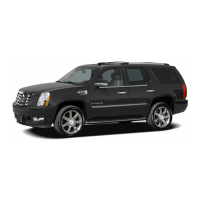
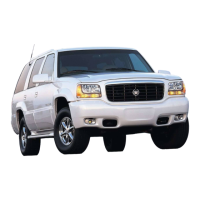

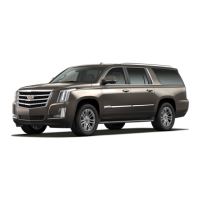
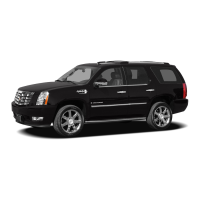


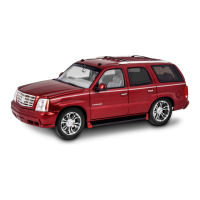
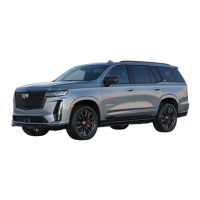
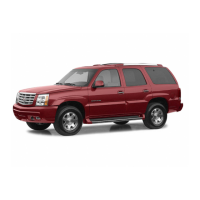
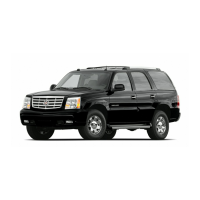
